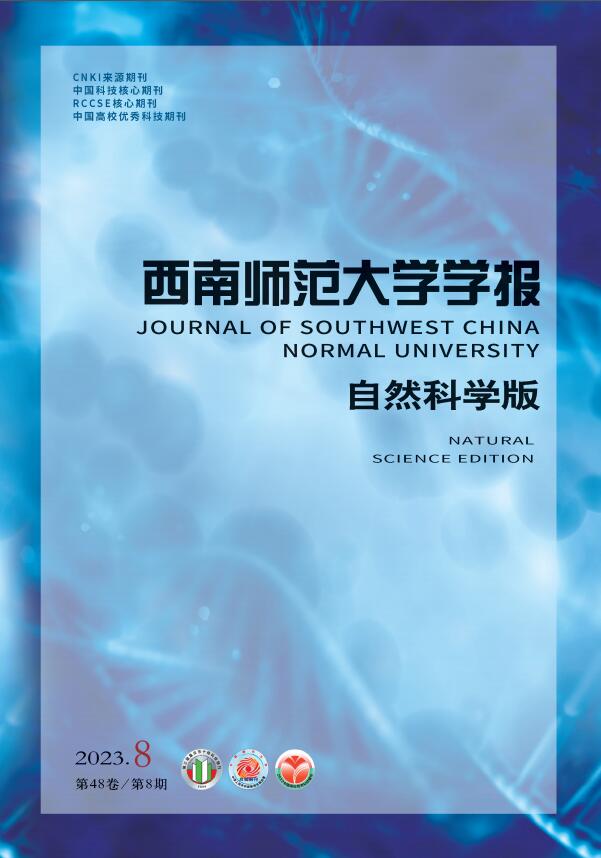-
捕食者-食饵动力学模型是数学生态学研究的主导课题之一, 具有普遍存在性和重要性, 它为理解种群随时间的变化提供了一种可管理的方法[1]. 因此, 我们可以很好地利用模型来分析和解决一些问题, 例如: 如何控制人口, 一种流行病大爆发的概率是多少, 在有或没有干预的情况下疾病可能会持续多久等等.
捕食者与被捕食者的相互作用是更为复杂的食物链、食物链网络和生物化学网络结构的基本组成部分[2-4]. 文献[5-6]引入了以下捕食者-食饵模型, 其中捕食者坏境的“承载能力”与被捕食的数量成正比.
其中: x为t时刻被捕食者物种的密度;y为t时刻捕食者物种的密度;r, a1, b1, μ, a2是正常数;r为被捕食者的增长率;μ为捕食者的增长率;b1为物种x个体之间的竞争强度;a1为捕食作用的强度;a2是x因y而减少的最大值的均值. 显然上述系统存在一个不动点:
应用线性分析容易证明该不动点是稳定的. 文献[7]数值模拟表明该不动点是全局稳定的, 文献[8]对这一结果给出了严格的证明. 该捕食者-食饵模型已经得到了广泛的研究.
然而, 在文献[5-6]的研究中, 只考虑捕食者对食饵的直接捕杀, 并没有考虑捕食者自身的存在对食饵的影响. 有研究表明捕食者在食饵面前出现也能在一定程度上改变食饵的行为和生理特征, 以至于影响食饵种群规模的大小, 其影响程度甚至超过直接捕杀[9-12]. 猎物对捕食者的恐惧会大大减少猎物的繁殖[13]. 为了描述猎物由于恐惧产生的反捕食防御所减少的产量, 文献[14]首次提出了恐惧因子函数
$\frac{1}{{1 + ky}}$ , 并被广泛应用[15-18]. 文献[14]中首先提出了一个捕食者-食饵模型关注猎物的反捕食行为, 该模型将恐惧效应因素纳入到猎物的繁殖中, 研究结果表明: 高度的恐惧(或相当强烈的反捕食行为反应)可以通过排除周期解的存在来稳定系统, 然而, 低水平的恐惧效应可以通过Hopf分支引起极限环.那么恐惧效应对于其他捕食者-食饵模型会有什么影响呢?
在上述讨论的基础上, 本文将通过引入恐惧因子
$\frac{1}{{1 + ky}}$ 来扩充模型(1), 该项表示由于恐惧而产生的反捕食的代价. 本文将研究的模型如下:其中参数k表示恐惧效应水平.
HTML
-
在本小节中, 我们将重点讨论模型(2)平衡点的存在性. 在详细讨论之前, 首先建立模型(2)解的一个先验界.
引理1 若r1-μ-b1μ>0, 对于模型(2)的任意非负解(x, y), 则
证
由标准比较定理得:
所以对于任意的ε>0, 存在一个T>0, 使得对于t>T时,
$x\left( t \right) ≤ \frac{{{r_1}}}{{{b_1}}} + \varepsilon $ 成立.因此
所以
模型(2)总是存在两个平衡点:
为了找到正平衡点, 我们求解以下系统:
由系统(3)的第二个式子, 我们得
因此
$x = \frac{{{a_2}y}}{\mu }$ , 代入系统(3)的第一个式子得如果φ(y)=0不止一个正根, 假设它有2个正根, 即y1, y2, 则
显然与假设矛盾, 所以φ(y)=0只有一个正根, 因此可以得出以下结论.
定理1 若r1-μ-b1μ>0, 模型(2)有唯一的正平衡点E*(x1*, y1*),
${x_1}^* = \frac{{{a_2}{y_1}^*}}{\mu }$ , φ(y1*)=0. 此时y1*满足结论1 我们发现恐惧因子k对于正平衡点E*的计算有很大的影响, 然而k对于正平衡点E*的存在没有影响.
引理2 当k>0时, x1*, y1*是递减的.
证
由
${x_1}^* = \frac{{{a_2}{y_1}^*}}{\mu }$ 得因为
所以
可得
因此引理2得证.
结论2 由引理2可得, 当k=0时, x1*取得最大值x0*且x0*是正根.即
所以
-
本节将研究模型(2)平衡点的稳定性.
定理2 系统(2)的平凡平衡点E0(0, 0)是不稳定的.
证
系统(2)在E0(0, 0)点的Jacobian矩阵为
${\mathit{\boldsymbol{J}}_0} = \mathit{\boldsymbol{J}}\left( {0, 0} \right) = \left[ {\begin{array}{*{20}{c}} r&0\\ 0&\mu \end{array}} \right]$ , 所以特征值为r和μ, 因此平衡点(0, 0)是不稳定的.定理3 系统(2)的边界平衡点
${E_1}\left( {\frac{r}{{{b_1}}}, 0} \right)$ 是不稳定的.证 当捕食者处于灭绝状态(或仅有被捕食者)时, 对于系统(2)的边界平衡点
${E_1}\left( {\frac{r}{{{b_1}}}, 0} \right)$ , 其Jacobian矩阵为${\mathit{\boldsymbol{J}}_0} = \mathit{\boldsymbol{J}}\left( {\frac{r}{{{b_1}}}, 0} \right) = \left[ {\begin{array}{*{20}{c}} { - r}&0\\ 0&\mu \end{array}} \right]$ , 所以特征值为-r和μ, 所以平衡点$\left( {\frac{r}{{{b_1}}}, 0} \right)$ , 0是不稳定的.定理4 系统(2)的正平衡点E*(x1*, y1*)是全局稳定的.
证 我们利用文献[8]的思想来证明定理4, 将构造以下的Lyapunov函数:
显然V(x, y)对所有x>0, y>0都是连续的, 通过计算可得
所以, 正平衡点(x1*, y1*)是正象限中V(x, y)函数的唯一极值:
对于所有x, y>0
显然除了正平衡点(x1*, y1*)使得
$\frac{{{\rm{d}}V}}{{{\rm{d}}t}} = 0$ 外对其他所有的(x, y)有$\frac{{{\rm{d}}V}}{{{\rm{d}}t}} < 0$ , 所以V(x, y)满足Lyapunov的全局稳定性定理, 系统(2)的平衡点(x1*, y1*)是全局稳定的, 定理4得证.
-
定义1 系统(2)的任意正解(x, y), 存在正常数mi, Mi, i=1, 2.
使得
由定理4知
x*, y*只与系统(2)的参数有关, 因此可以清楚地知道恐惧效应对系统的持久性没有影响.
-
由第一节可知
可得y是k的严格递减函数, 即增加恐惧效果k可以降低捕食者密度.
3.1. 恐惧效应对系统持久性的影响
3.2. 恐惧效应对捕食者密度的影响
-
本文改进了Leslie-Gower捕食者-食饵模型, 在原有的模型基础上考虑了恐惧效应, 研究结果表明, 该模型的正平衡点是全局稳定的, 还发现恐惧效应对系统的持久性没有影响, 但可以降低捕食者的密度, 并且捕食者和被捕食者的密度是由捕食者之间的相互干扰和恐惧因素的成本共同诱导的.






 DownLoad:
DownLoad: